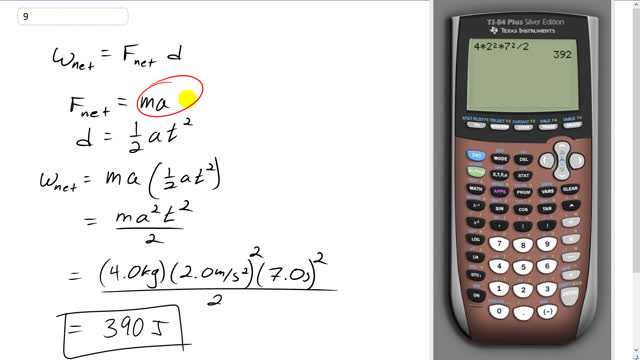
A box of mass 4.0 kg is accelerated from rest by a force across a floor at a rate of for 7.0 s. Find the net work done on the box.

In order to watch this solution you need to have a subscription.
This is Giancoli Answers with Mr. Dychko. The net work done on the box is the net force applied multiplied by the distance. Of course, these have to be parallel and so on, which they are in this case. And the net force is mass times acceleration and the distance, we can write as, one-half times acceleration times time squared based on our kinematics formula assuming that it starts from rest, which I believe it does. Yeah, it says, "accelerated from rest" so that's good. So we substitute both of those into our work net formula so Fnet is ma, which we write here. And d is one-half a t squared, which we write there. And that makes a squared times t squared times m over 2. So we plug in numbers and there we go. We have 4.0 kilograms times 2 meters per second squared acceleration squared times 7 seconds squared divided by 2, which is 390 joules, is the net work done on the box.
Could you also approach the problem by first solving for final velocity by using V=a*t, and then plugging this velocity into v^2=vo^2+2AD to solve for displacement?
Thanks.
Hi sheumangutman,
Yes you can! Substituting info gives , which, with rearranges to after you divide both sides by . is the formula I used in the video. Good work!
All the best,
Mr. Dychko